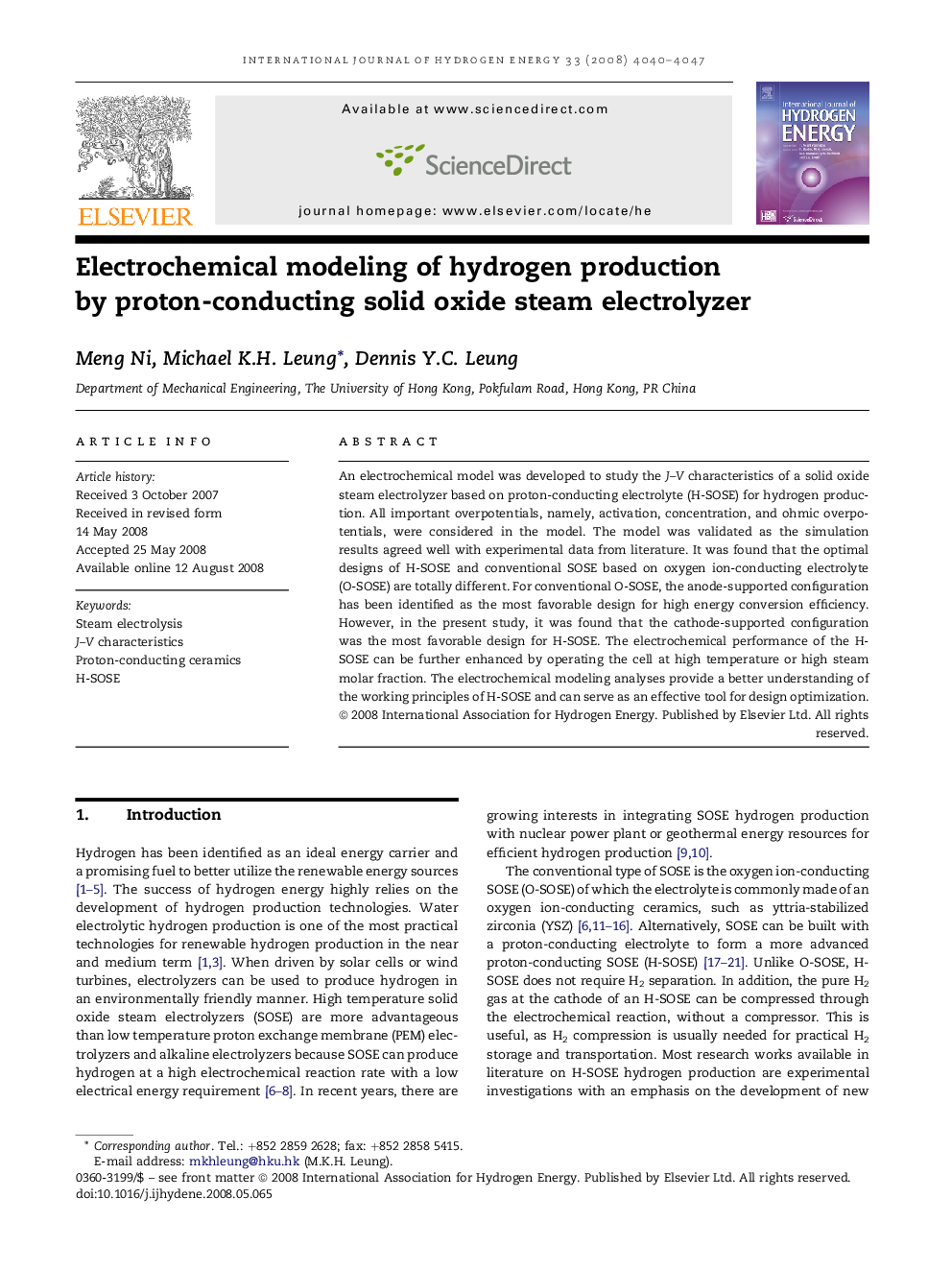| Article ID | Journal | Published Year | Pages | File Type |
|---|---|---|---|---|
| 1278849 | International Journal of Hydrogen Energy | 2008 | 8 Pages |
An electrochemical model was developed to study the J–V characteristics of a solid oxide steam electrolyzer based on proton-conducting electrolyte (H-SOSE) for hydrogen production. All important overpotentials, namely, activation, concentration, and ohmic overpotentials, were considered in the model. The model was validated as the simulation results agreed well with experimental data from literature. It was found that the optimal designs of H-SOSE and conventional SOSE based on oxygen ion-conducting electrolyte (O-SOSE) are totally different. For conventional O-SOSE, the anode-supported configuration has been identified as the most favorable design for high energy conversion efficiency. However, in the present study, it was found that the cathode-supported configuration was the most favorable design for H-SOSE. The electrochemical performance of the H-SOSE can be further enhanced by operating the cell at high temperature or high steam molar fraction. The electrochemical modeling analyses provide a better understanding of the working principles of H-SOSE and can serve as an effective tool for design optimization.
